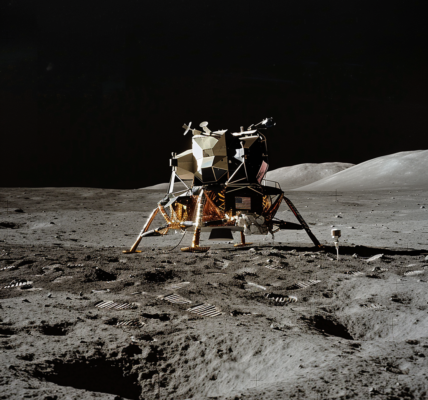The origins of the Moon have long been a topic of fascination and debate among scientists and astronomy enthusiasts alike. For nearly four decades, the prevailing theory has been that the Moon was formed from debris resulting from a catastrophic collision between a young Earth and a Mars-sized body. However, a recent study from Penn State University is challenging this long-held belief, suggesting that the Moon may have actually been captured from space during a close encounter with a binary system of celestial bodies.
This groundbreaking research, led by Professor Darren Williams and Senior Research Engineer Michael Zugger, presents a compelling alternative to the giant impact hypothesis. According to their findings, Earth’s gravity may have disrupted a binary system—consisting of two celestial bodies orbiting each other—allowing Earth to capture one of these objects, which subsequently became our Moon. The other body in the binary system was likely expelled into the vastness of space.
The giant impact hypothesis, which has dominated discussions on lunar formation since the Kona Conference in 1984, was primarily based on analysis of lunar rock samples collected during the Apollo missions. These samples revealed that the Moon’s composition is strikingly similar to that of Earth, leading to the conclusion that it was formed from debris ejected during a massive collision. This narrative has shaped our understanding of the Moon’s origins for decades.
However, the new binary-exchange capture theory raises intriguing questions about the Moon’s formation and its relationship with Earth. One of the key pieces of evidence presented by Williams and Zugger is the Moon’s orbital alignment. They note that “the Moon is more in line with the sun than it is with Earth’s equator,” a discrepancy that contradicts what would be expected if the Moon had formed from a collision. This misalignment has prompted researchers to explore alternative explanations for the Moon’s existence.
The implications of this new theory extend beyond just the Moon’s origin. It challenges not only our understanding of how planetary satellites form but also the dynamics of our solar system. If the Moon was indeed captured from a binary system, it could suggest that other celestial bodies may have similar origins, prompting a reevaluation of how we view the formation of moons and planets in our universe.
Furthermore, this research opens the door to new avenues of investigation. Scientists may now consider the possibility that other moons in our solar system, or even exoplanets in distant systems, have been captured rather than formed in situ. This could lead to a broader understanding of the processes that govern celestial mechanics and the formation of planetary systems.
The study has garnered attention not only for its bold claims but also for its potential to inspire further research into the complexities of lunar and planetary formation. As scientists continue to analyze data from lunar missions and explore the dynamics of celestial interactions, the story of the Moon’s origin may become even more nuanced.
In conclusion, the findings from Penn State represent a significant shift in our understanding of the Moon’s origins. The binary-exchange capture theory presents a fascinating alternative to the long-accepted giant impact hypothesis, inviting scientists and enthusiasts alike to reconsider the story of our closest celestial neighbor. As research in this field progresses, we may uncover even more surprising truths about the Moon and its place in the cosmos.





